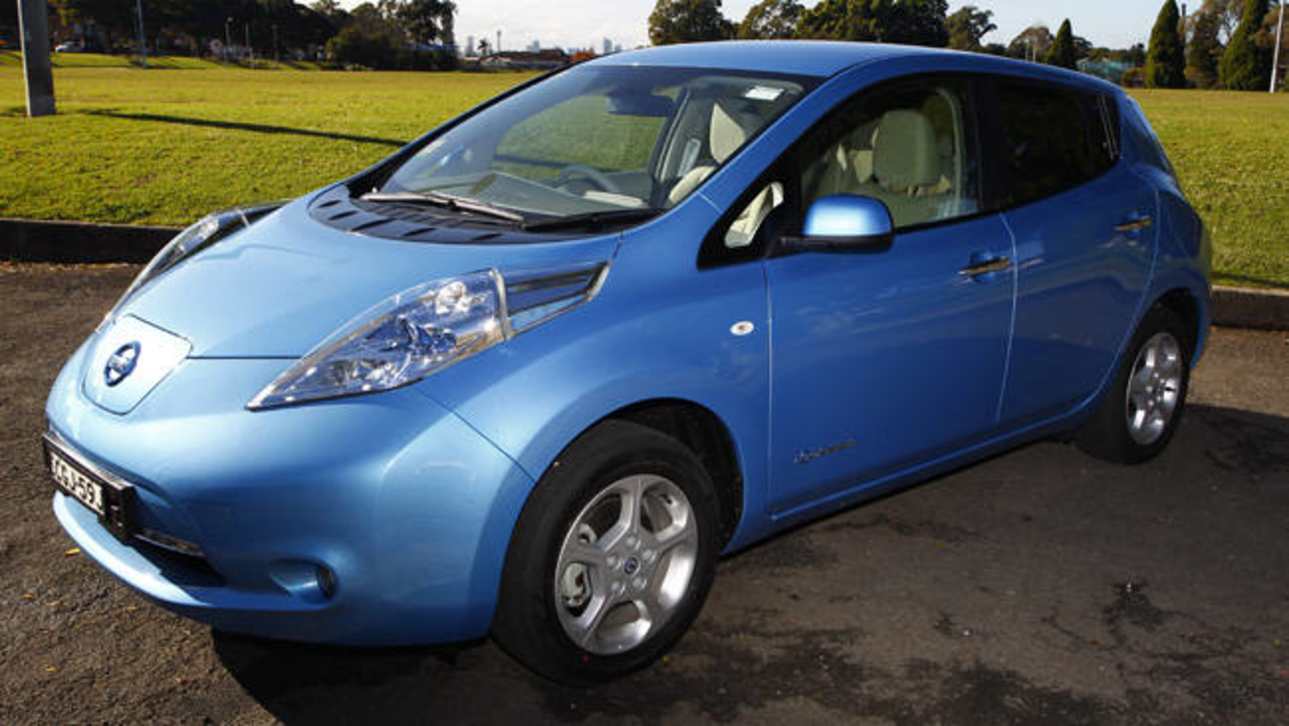But Nissan wants you to open your wallet this wide for the privilege of appearing "green'' and driving the new electric-only Leaf.
There are a few issues you need to keep in mind with such vehicles. First is the fact that unless you have solar generation on your house, you are just shifting the production of carbon dioxide from the exhaust pipe to the power station smoke stack.
Second, there's this thing called range anxiety that will niggle in the back of your mind when you have such an arbitrary driving limit because if you forget and go too far, you will need to be towed home.
When you get there, you can't simply pour in some petrol or diesel and get going straight away, you will need to put in a second battery pack if you have access to one or put the car on "fast charge'' to get any sort of useable range.You will end up driving with one eye on the battery charge meter - distracting your attention like a mobile phone.
However, if you live inner-city and only travel a few kilometres a day (which realistically should be on public transport) the five door Leaf might have some appeal.
Leaf is the first mass-produced, purpose built electric car on the Australian market and Nissan plans to introduce more _ dependent on Leaf success or otherwise. It is available now from 13 Leaf accredited Nissan dealerships across Australia.
Drive is to the front wheels with batteries housed in the floor for optimum vehicle packaging and weight distribution. It scores a five star crash rating under the Euro NCAP system and has seating for five adults and a good-sized cargo area.
Nissan Leaf's 24 kWh lithium-ion (Li-ion) battery is comprised of 48 compact modules of four cells each, which allows a high degree of packaging flexibility. The batteries are designed to maximise drive time and minimise charging time. Unlike conventional cylindrical batteries, the thin, compact laminated cells offer more flexibility in design applications.
Responsive performance comes from the 80kW (108bhp) electric motor that instantly generates its maximum 280Nm torque equivalent to the torque of a conventional 3.0-litre V6 petrol engine -from a standing start. The Nissan Leaf is easy to drive.
The electric power train does not idle and only rotates when the vehicle is moving. To start the engine, the driver need only press the start button, and electricity begins flowing to the motor. Using the electric shift, the driver then selects 'D' range, and the vehicle starts to move.
Leaf's regenerative braking system helps replenish its range. By applying the brakes or reducing speed by letting off the accelerator, the electric motor acts as an electric generator, converting energy, that would otherwise be wasted, into battery energy.
To increase regenerative braking, there is a driver-controlled Eco mode setting, which can also be used to reduce air conditioning and thus improve driving range when driving in urban areas.
Leaf has an "Approaching Vehicle Sound'' for pedestrians. Driving range depends on several factors, including external temperature, air conditioning usage, battery age and driving behaviour.
The Leaf onboard navigation system is smart enough to tell you based on destination input and state of charge whether you have the range to make it and if not, search for nearby charging station along the route.
In the event that the battery becomes critically low, power limitation mode will automatically minimise energy consumption and reduce speed to help you get to a charging dock.



.jpg)



.jpg)

.jpg)
.jpg)
.jpg)








.jpg)








.jpg)
.jpg)
Comments